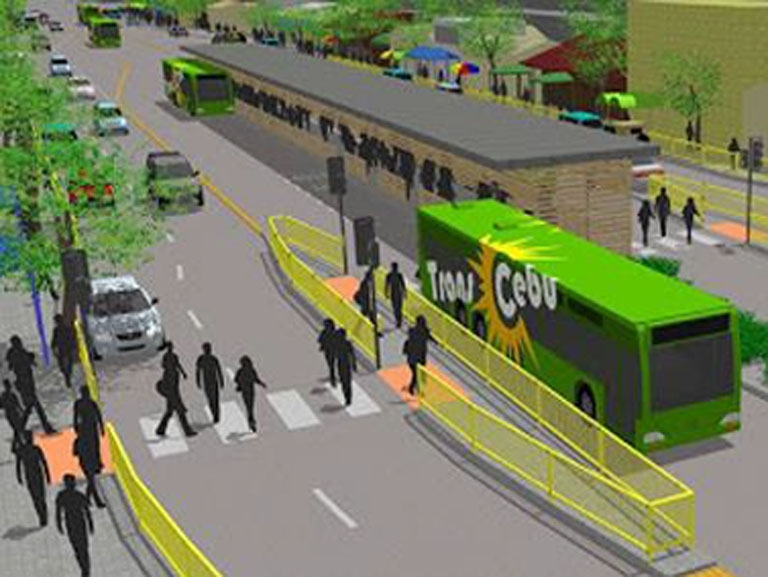
BRT Cebu image – Source DOTC
Despite its recent setbacks and challenges, the Cebu Bus Rapid Transit (BRT) is still a go, and its proponents saying that it will be operational by 2021.
Cebu City Mayor Tomas Osmeña assured that nothing will stop the project at this point.
His statements came after the Commission on Audit (COA) issued an audit observation memorandum (AOM) revealing that the Philippine government has been charged P14.4 million in commitment fees since 2015 due to the delay in the project’s implementation.
“They don’t realize that I’m going to fight this. We made our stand. We convinced Pernia (National Economic Development Authority Secretary Ernesto Pernia). We were even able to stop Alvarez (House Speaker Pantaleon Alvarez) from scrapping it,” said Osmeña.
The mayor again lashed at his arch critic, Presidential Assistant to the Visayas Secretary Michael Dino whom he accused as the one delaying his flagship mass transport project.
Dino also announced that he is coordinating with the Department of the Transportation (DOTr) on coming up with an alternative to the BRT.
DOTr is the implementing agency of the BRT, which COA now projected to cost P17 billion.
Osmeña also urged the citizens to back the implementation of the BRT, that spans up to 21 kilometers from Barangay Bulacao in the south to Barangay Talamban in the north, in order to avoid further delays.
“Who suffers (if the project gets delayed)? It’s not me. Guess who suffers? The people. That’s why the people have to make a stand. Never forget that what’s at stake is the future of Cebu. It’s their future,” he added.
Meanwhile, the BRT–Project Implementation Unit (PIU) has already submitted to COA a timeline detailing their plans and measures to ensure that the mass transport system, which was funded through a loan granted by the World Bank (WB) and the French government, will be realized in 2021.
COA attributed the delay of the BRT mainly to the absence of a technical support consultant (TSC). Without a TSC, other components of the project cannot start doing their respective tasks.
The PIU is targeting to finalize the detailed engineering design (DED) this May, and procure a contractor needed to implement the civil works this June for the BRT’s depot in the South Road Properties (SRP).
Construction of the BRT’s Phase 1, that covers the SRP, Escario to Ayala Center Cebu, is expected to start this October. By 2019, all four phases of the project should be in place.
More costly
However, to some members of the private sector, pushing through with the BRT is more costly than withdrawing the bilateral agreement the national government entered with WB and the French government.
In a text message sent to Cebu Daily News, Gordon Alan Joseph, executive committee chairperson of the Metro Cebu Development Coordination Board (MCDCB), said the BRT should have been terminated before.
“The BRT is previously flawed from an engineering point of view. Our roads are too narrow and only a small percentage of jeepneys will be taken off the streets. It’s better to pay penalties than to spend billions on a poorly designed project,” said Joseph, who also heads the Cebu Business Club.
In their report, the BRT–PIU stressed the need for a ‘strong, political will’ from all stakeholders affected by the BRT in order to avoid further delays. /with Reporter Jose Santino S. Bunachita